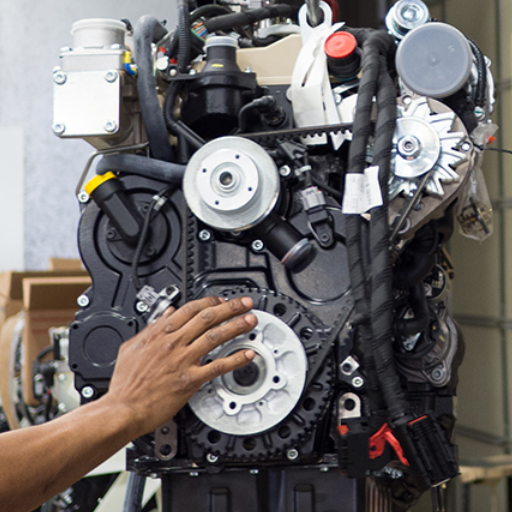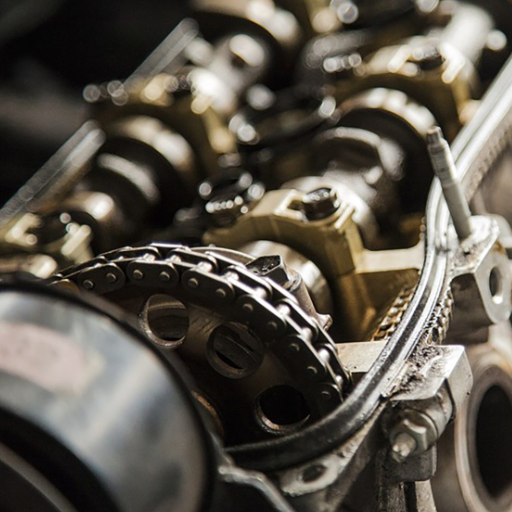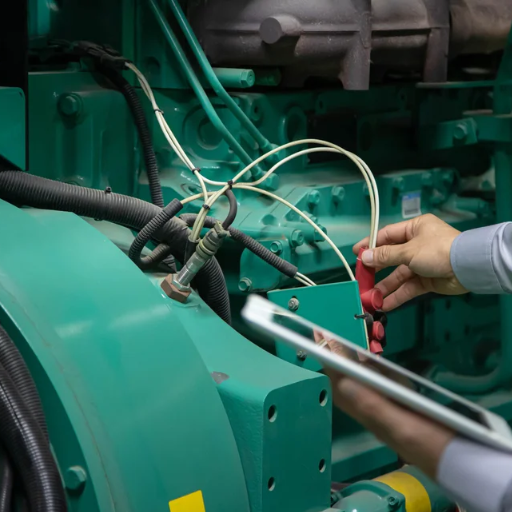A generator is a vital piece of equipment that needs to provide power during power outages, emergencies, or simply when people live in the wilderness. But being other machinery, they do present issues occasionally in one’s day-to-day life, in just the times when one would least wish it to. Starting problems or power interruptions may be among those problems generators face that could be quite frustrating and equally costly if not looked into immediately. This article intends to be your one-stop solution to recognizing and fixing common generator problems effectively.
Understanding Generator Issues

It is possible for generators to face several common problems, big or small, with fuel issues, battery failure, or just lack of routine maintenance. If your generator refuses to start, check whether the gas supply is adequate and clean and if the fuel is fresh. Another common culprit is a weak or dead battery—inspect the battery connection for corrosion or loose terminals, and check to be sure it is fully charged. In the absence of due maintenance, the filters can get clogged; spark plugs can get dirty; and the oil can lose its effectiveness-every bit of which can impede performance. Regular service and adherence to the maker’s instructions will help bypass these issues and keep your generator running smoothly.
Common Signs of Generator Problems
Recognizing the signs of generator problems early can prevent costly repairs and unexpected downtime. Here are some common indicators that your generator might be in trouble:
- Difficulty Starting
A generator that struggles to start or fails to start entirely is often a sign of issues with the battery, fuel system, or spark plugs. For example, a weak battery or corroded terminals can prevent the generator from turning over, while clogged fuel lines may disrupt proper fuel flow.
- Unusual Noises
Louder-than-normal or strange noises, such as knocking, grinding, or hissing, may signal mechanical wear, loose components, or poor lubrication. These noises should be inspected immediately to identify the root problem, as ignoring them could lead to further damage.
- Excessive Exhaust Smoke or Leaks
Dark or excessive exhaust smoke often indicates oil or coolant leaks, fuel contamination, or combustion problems. These issues not only affect the generator’s performance but may also pose safety and environmental risks.
- Low Power Output
If a generator is not delivering the expected power, even under normal load conditions, it may be due to an electrical fault, dirty air or fuel filters, or a malfunction in the alternator. Consistently monitoring voltage and performance during operation can help identify these problems early.
- Frequent Shutdowns or Overloading
Unexpected shutdowns or overloading might point to issues in the control panel, faulty circuit breakers, or insufficient capacity for the power demand. Proper sizing of your generator to match your operational requirements is crucial in preventing these occurrences.
- Fuel Inefficiency
A noticeable increase in fuel consumption can signify engine inefficiencies or clogged components. Routine inspections and maintenance are essential to maintain optimum fuel efficiency and save operational costs over time.
Investing in regular inspections and following a proactive maintenance schedule can mitigate many of these issues. By addressing warning signs early, you can extend the life of your generator and ensure it remains a reliable power source when you need it the most.
Frequent Generator Failures and Their Causes
Generators are essential equipment for providing reliable backup power, but like any machinery, they are prone to several common failures. Understanding these issues and their causes is essential for preventing breakdowns and maintaining functionality. Below are some of the most frequent generator failures and their potential causes:
1. Battery Failure
Battery-related issues are one of the leading causes of generator failure. This can be due to loose connections, sulfate buildup on terminals, or insufficient charging, especially during long periods of inactivity. Over time, batteries may also degrade, losing their ability to hold a charge. Regular battery inspection and testing can help ensure readiness in critical moments.
2. Fuel Supply Issues
Fuel system problems, such as fuel contamination, low fuel levels, or clogged fuel filters, frequently lead to generator malfunctions. Contamination from water or sediments can lower fuel quality, reducing engine efficiency and potentially causing damage. Cleaning fuel tanks and replacing filters periodically are vital steps to preventing these issues.
3. Coolant and Oil Leaks
Coolant or oil leaks disrupt the generator’s ability to manage temperature and lubrication, potentially resulting in overheating or significant damage to engine components. Seals, gaskets, or hoses can degrade over time, leading to leaks. Monitoring fluid levels and inspecting seals during maintenance reduces the risk of such failures.
4. Control Panel Malfunctions
Faulty control panels may lead to operational inefficiencies or a complete inability to start the generator. Common issues include wiring problems, software glitches, or damage to circuit boards. Regularly checking the control panel for alarms, calibrating settings, and updating software helps prevent these malfunctions.
5. Overloading
Operating a generator beyond its rated capacity can cause overheating, excessive wear on parts, or even permanent damage to the unit. Overloading can occur when power needs exceed the generator’s output rating or when multiple appliances are connected simultaneously. Calculating power requirements accurately and ensuring proper load distribution are critical for avoiding this issue.
6. Lack of Regular Maintenance
Poor maintenance or skipped inspections often result in more significant, preventable generator failures. Neglecting to replace worn-out parts, ignoring warning signs, or failing to perform routine servicing can shorten the generator’s lifespan. A comprehensive maintenance schedule, including professional servicing, is key to long-term reliability.
7. Weather and Environmental Factors
Generators exposed to extreme weather conditions, such as heavy rain, snow, or high humidity, are at risk of electrical short circuits or rust. Additionally, improper ventilation can lead to overheating, especially in enclosed or poorly ventilated spaces. Ensuring proper enclosure, ventilation, and environmental protection minimizes damage from weather-related factors.
By recognizing these common failures and their underlying causes, both residential users and industrial operators can minimize downtime and ensure their generators operate efficiently during critical times.
Identifying Common Generator Issues
Common generator issues include battery failure, fuel problems, leaks, clogged lines, low coolant, and worn-out components.
|
Issue |
Description |
|---|---|
|
Battery |
Dead or weak battery |
|
Fuel |
Stale or no fuel |
|
Leaks |
Oil, fuel, or coolant |
|
Clogs |
Blocked fuel lines |
|
Coolant |
Low or dirty coolant |
|
Components |
Worn spark plugs, filters |
Troubleshooting Common Generator Problems

- Generator Fails to Start
- Possible Cause: Low fuel levels, dead battery, or faulty spark plugs.
- Solution: Check fuel levels and refuel if necessary. Inspect the battery connections for corrosion or loose wiring and clean or tighten them. Replace or clean the spark plugs if they are worn or dirty.
- Overheating
- Possible Cause: Blocked air filters or insufficient coolant.
- Solution: Inspect and clean the air filters to ensure proper airflow. Check the coolant level and top it off if required. Ensure the cooling system is free from leaks or blockages.
- Frequent Shutdowns
- Possible Cause: Overloading or fuel supply issues.
- Solution: Reduce the electrical load to within the generator’s capacity. Check for fuel contamination or clogs in the fuel line and address accordingly.
- Low Power Output
- Possible Cause: Dirty fuel injectors or worn-out engine components.
- Solution: Clean or replace the fuel injectors as needed. Perform regular maintenance to ensure engine components are in good condition.
By systematically addressing these common issues, operators can ensure reliable generator performance and minimize interruptions.
Step-by-Step Troubleshooting Techniques
- Inspect the Fuel System
- Details: Check the fuel tank for adequate levels of clean fuel. Look for signs of contamination, such as water or debris, which can hinder performance. Examine fuel lines for cracks or leaks that may reduce fuel pressure.
- Data: Ensure the fuel pressure matches the manufacturer’s specifications, typically ranging from 50–70 psi depending on the generator model.
- Examine the Air Filter
- Details: A clogged air filter can restrict airflow and reduce engine efficiency. Remove and inspect the filter for dirt and debris buildup.
- Solution: If excessively soiled, clean or replace the air filter to restore optimal air intake.
- Data: Replacement intervals are typically every 100–200 hours of operation, but regular inspections are advised for dusty environments.
- Test the Battery
- Details: Verify the battery’s charge level using a multimeter and inspect terminals for corrosion. Ensure the connections are tight and clean.
- Solution: Fully charge low batteries or replace them if they are nearing the end of their lifespan, usually 3–5 years.
- Data: Standard generator batteries should read around 12.6 volts when fully charged.
- Check the Spark Plug
- Details: Remove the spark plug and inspect it for fouling, wear, or improper gap. A damaged spark plug can lead to inefficient combustion or engine misfires.
- Solution: Clean the plug or replace it as necessary. Adjust the gap to the specified range (e.g., 0.028–0.031 inches).
- Data: Generators often require spark plug replacement after every 100 hours of operation.
- Evaluate the Cooling System
- Details: Inspect the coolant level in liquid-cooled generators and check for leaks in hoses or the radiator. Overheating can damage engine components.
- Solution: Refill coolant to the recommended level and ensure the radiator fans are functional.
- Data: Coolant should typically be changed every 500 hours or as advised by the manufacturer.
- Monitor Oil Levels and Quality
- Details: Low or degraded oil can increase friction and wear on engine parts. Regularly check the oil level with the dipstick and assess its clarity and color.
- Solution: Add or replace oil if necessary, adhering to the recommended oil grade.
- Data: Most generators require oil changes every 50–100 hours based on usage conditions.
- Inspect Electrical Connections and Wiring
- Details: Loose or damaged wiring may result in erratic performance or failure to start. Check for frayed wires, loose connections, and signs of overheating.
- Solution: Secure or replace compromised connections and wires as necessary.
- Data: Use a continuity tester to ensure consistent electrical conductivity.
By following these troubleshooting steps systematically, operators can identify and resolve most common generator issues efficiently. Accurate data and regular inspections are fundamental to maintaining high-performing equipment.
How to Diagnose Fuel and Air Filter Issues
Diagnosing fuel and air filter issues is essential to ensure the generator operates smoothly and efficiently. Fuel and air filter problems can reduce performance, disrupt combustion, and lead to costly repairs if not addressed promptly. Here’s a step-by-step approach to identify and address such issues:
1. Check for Clogged Filters
-
- Symptoms: Reduced engine power, rough running, or difficulty starting.
- Inspection:
- Remove the air filter and inspect it for dirt buildup. Ensure it is clean and allows sufficient airflow.
- For fuel filters, check for visible clogs or contamination in the filter housing. A clogged fuel filter may prevent proper delivery of fuel to the engine.
- Data:
- Studies highlight that air filters clogged with 50% debris can lead to a 10-15% decrease in engine efficiency.
- Fuel filters should generally be replaced after every 500-1,000 hours of operation, depending on the manufacturer’s recommendations.
2. Monitor Fuel Supply
-
- Symptoms: Engine sputtering, stalling, or failing to start altogether.
- Inspection:
- Verify fuel quality by checking for sediments, water, or a stale odor in the fuel tank. Poor-quality fuel can exacerbate filter clogs.
- Ensure the fuel filter properly connects to the system without leaks or obstructions.
3. Perform Flow Rate Testing
-
- Test Method:
- Measure the fuel flow rate from the filter outlet using a graduated container. Use the generator’s manual specifications to compare with the expected flow rate.
- Data:
- Reduced fuel flow is a clear indicator of a blocked or inefficient filter. A variation beyond 10% of the recommended flow rate suggests an immediate need for replacement.
- Test Method:
4. Listen for Whistling or Hissing Sounds
-
- Symptoms: Strange sounds during operation may indicate restricted airflow.
- Inspection:
- A clean air filter allows the engine to maintain a balanced air-to-fuel ratio, preventing strain on the system. Replace the air filter if airflow is obstructed.
5. Inspect for Maintenance Neglect
-
- Symptoms: Dirt and grime visibly accumulating on filters, or manufacturer-recommended service intervals being overlooked.
- Data:
- Generators operating in dusty environments require filter replacements more frequently, often at 250-hour intervals for heavy dust exposure.
By systematically diagnosing and maintaining fuel and air filters, operators can significantly enhance generator reliability and efficiency. Regular inspections and adherence to replacement schedules not only prevent unexpected failures but also extend the equipment’s lifespan.
Addressing Coolant and Oil Level Concerns
Maintaining proper coolant and oil levels is essential to guarantee the efficient performance and longevity of a generator. Coolant plays a critical role in managing engine temperatures, preventing overheating, and reducing wear on critical components. Similarly, oil ensures smooth operation by lubricating moving parts, minimizing friction, and reducing the risk of mechanical failure. Failure to regularly inspect and maintain these levels can result in costly downtimes and damage.
- Coolant Management:
- Generators generally require coolant fluid levels to remain consistent between service intervals, which can vary from 250 to 500 hours of operation, depending on the manufacturer and usage conditions.
- Research indicates that inadequate coolant levels are one of the most common causes of generator overheating. Operators should also monitor the coolant’s chemical balance, ensuring it contains the recommended mix of water and antifreeze to prevent scaling and freezing in extreme conditions.
- Regular flushes and refills may be necessary every 1,000 to 2,000 hours in severe operating conditions, particularly in high-temperature environments.
- Oil Level Monitoring:
- Running a generator with insufficient oil can severely damage internal components, leading to rapid degradation of engine parts. Standard practices recommend checking oil levels before each use or every 8 to 12 hours of continuous operation.
- Industry data shows that oil changes should typically occur every 100 to 200 hours of usage, depending on the type of oil and operating conditions, such as extreme heat or excessive dirt.
- Advanced generators equipped with oil life monitoring systems can provide real-time data, helping operators gauge when maintenance is overdue.
By regularly monitoring coolant and oil levels and adhering to manufacturer-recommended intervals for replacements, operators can significantly reduce the risk of downtime and improve the generator’s efficiency and durability. Furthermore, understanding the specific requirements for each generator model ensures the adoption of best practices tailored to individual equipment needs.
Preventive Maintenance for Generators

Preventive maintenance allows for the dependable operation of generator systems and consequently prevents any unexpected breakdowns from taking place. Through regular inspections, cleaning, and the replacement of parts due to wear and tear, the operator enhances the life span and performance of the generator. Battery and fluid level tests are major checks, as are tests for wear on belts and hoses, while also running the generator at intervals to ensure it will work when needed. Thus, regular maintenance minimizes disruptions during operations and helps avoid intensive repair costs, thereby guaranteeing generator functionality with time.
Essential Generator Maintenance Tips
Key tips include regular inspections, cleaning, fuel checks, battery tests, oil changes, exercising the generator, and maintaining records.
|
Tip |
Description |
|---|---|
|
Inspect |
Check for leaks, wear |
|
Clean |
Remove dirt, debris |
|
Fuel Check |
Test, polish fuel |
|
Battery |
Test, replace timely |
|
Oil Change |
Replace per schedule |
|
Exercise |
Run periodically |
|
Records |
Log maintenance tasks |
How to Extend the Lifespan of Your Generator
Keeping the generator in good condition necessitates regular maintenance. The oil is checked and changed at the required intervals, filters are replaced whenever necessary, and the machine’s components are checked for wear, like belts and hoses. I also check that the battery is holding a charge every so often, and that its connections are in good order. Turning the generator on periodically through periods of non-use keeps it in good form. Staying up-to-date on these maintenance activities keeps me from risking costly repairs and preserves the reliability of the generator for many years.
Common Maintenance Tasks to Avoid Generator Failure
Routine inspections, cleaning, fuel checks, battery tests, oil changes, and exercising the generator are essential to prevent failures.
|
Task |
Description |
|---|---|
|
Inspect |
Check for leaks, wear |
|
Clean |
Remove dirt, debris |
|
Fuel Check |
Test, polish fuel |
|
Battery |
Test, replace timely |
|
Oil Change |
Replace per schedule |
|
Exercise |
Run periodically |
When to Seek Professional Generator Repair Services

If your generator refuses to start, throws off peculiar noises, puts out heavy smoke, or has drastically fallen into its working capacity, then you definitely will have to consider having it checked by expert hands. Also, if you spot any leaks of fuel or oil, persistent overheating, or warning lights that cannot be addressed through conventional troubleshooting steps, seek assistance from an expert technician. These are the folks who diagnose and fix very difficult problems which ensure that your generator remains safe enough for working and is good for a longer period of time.
Understanding When to Call for Help
Generators have incredible potential of ensuring unbroken power early, the timely maintenance being therefore extremely necessary so as to avoid costly breakdowns. Unplanned outages due to mechanical failures are counted for nearly 45 percent, the biggest among the reasons being fuel system-related problems. Regular maintenance will keep these at bay, thus decreasing the number of hours inactive and increasing service life. Oil changes, periodic fuel testing, ignition inspections, and engine load testing are some examples.
If the generator keeps shutting down, stalls when operating, or fails to bear the load capacity, it may be an indication of engine or electrical-system-related problems. Carbon buildup on spark plugs, clogged air filters, or maybe just a bad fuel could have stopped working gradually. These types of preventable issues need prompt repair since late repairs only mean escalation of costs or voiding of manufacturer’s warranty.
For generators working in high-demand settings, professional servicing is recommended between every 250-500 hours, depending on the model and quality of use. You can do more for your equipment by installing monitoring systems that alert users of voltage problems and/or coolant temperature variations. Taking these tips into account will ensure safety and efficiency in operation, thus giving maximum service life to your equipment.
Choosing the Right Generator Repair Service
Choosing a generator repair service is important to guarantee the service is performed reliably and to minimize downtime. When choosing a repair service, consider qualifications and certifications, in addition to the service provider’s competence in servicing your generator model and brand. For example, repair technicians certified in Electrical Generating Systems Association (EGSA) often can serve a wide array of repair needs.
Response time is also critical in selecting a repair service. A good repair company will carry out emergency repairs; some even guarantee to respond within 24 hours in order to keep disruption from occurring for an unreasonable length of time. Ask about warranty policy, and if it offers any preventive maintenance program, which would be great to implement in saving a little more down the road and decreasing the possibility of future breakdowns.
The importance of cost transparency cannot be understated while being in the market for generator repair services. Ask for a detailed estimate before you do any work and make sure the price includes labor and parts. Pricing depends on location and service difficulty, but an industry review back from 2023 gives an average hourly rate for labor between $75 and $150 for generator repairs.
Lastly, check customer reviews and ratings so that you can consider a company’s reputation and customer satisfaction. Those companies with consistently high marks and praise tend to place value on quality work and responsive service, which should go a long way to ensuring the integrity of your generator. Following the above-mentioned procedures will allow you to choose any repair service confidently, knowing that it fits your exact needs.
Cost Considerations for Generator Repair
Repair charges depend on several factors, such as the type of generator, the damages sustained, and what rates are charged by the providers. Minor repairs usually cost between $75 and $300. Some major repairs, including a damaged alternator or control panel fixes, could reach between $500 and $1,500. Repair costs for standby generators may be even more because of their complexity, with some repairs crossing $2,500.
The total cost is also heavily dependent on the labor charges. Hourly charges for technicians may vary between $50 and $150, depending on their experience and the geographical location. There is also a wide price range for replacement parts. Small items such as filters or belts usually run between $10 and $50, whereas larger parts such as fuel pumps or starter motors can cost anywhere from $200 to $800 and above.
Maintenance contracts usually run from $200 to $500 a year. They reduce the likelihood of major repairs by ensuring the generator is always in perfect working condition. This is one area where it really pays to look at the upfront cost versus the value. If you know these costs, you can budget accordingly and be assured your generator will be there for you when required.
Types of Generators and Their Common Issues

Generators include portable, inverter, standby, and industrial types, with common issues like leaks, low coolant, dead batteries, and improper maintenance.
|
Type |
Common Issues |
|---|---|
|
Portable |
Fuel leaks, noise |
|
Inverter |
Voltage issues |
|
Standby |
Overheating, fuel |
|
Industrial |
Load, coolant |
Challenges with Standby Generators
Standby generators are a mechanism for reliable backup power during outages, but they do come with challenges. Problems related to battery failure are the most common. Such failures usually result from non-usage or poor maintenance. These form as many as 80% of the generator failures reported, thereby making it hugely important in the maintenance schedule.
Fuel system issues rank as another frequent set of problems, especially for those running on diesel. Contaminated fuel, usually caused by moisture or microbial growth, causes clogging and compromises the performance of the engine. Nearly 50% of all diesel generator failures are assessed to be due to fuel contamination, emphasizing inspection and cleaning of the fuel systems on a regular basis.
Load management is another aspect of concern. Running a generator at too low a load (thus causing wet stacking and carbon buildup) or an overengineered setup could finally damage some engine components and considerably reduce the operational time of a generator.
Lastly, environmental factors and adverse location of the generator can lead to operational problems. Improper ventilation or exposure to weather extremes may cause overheating, corrosion, and the drop in efficiency of a generator. Proper installation and periodic inspections shall help keep these risks at bay, thereby putting the generator on standby mode for performance during critical times. By taking care of these issues proactively, users set a solid foundation to build upon for the best reliability and lifespan from a standby generator.
Common Problems in Industrial Generators
Industrial generators often face issues like neglected maintenance, leaks, overheating, improper sizing, clogged lines, dead batteries, and water damage.
|
Key Point |
Description |
|---|---|
|
Maintenance |
Neglected upkeep leads to failures. |
|
Leaks |
Oil, fuel, or coolant leaks. |
|
Overheating |
Caused by low coolant or clogged filters. |
|
Sizing |
Improper load damages efficiency. |
|
Clogs |
Fuel or air line blockages. |
|
Battery |
Dead or malfunctioning batteries. |
|
Water |
Damage from moisture or rust. |
Commercial Generator Issues and Solutions
Commercial generators are the lifeblood of any business that requires power on a timely basis. Generators, if not addressed immediately, may become many other issues hindering performance. Here are some typical issues and their remedies with relevant data to underlie the importance of the matter.
1. Fuel Supply Problems:
A generator with low or unfit fuel will stall over time and thus damage the engine. Industry-related statistics claim that about 60-70% of generator failures are attributable to fuel contamination. Regular maintenance should include fuel polishing and replacement, which serves to maintain fuel viability and keep it uncontaminated. Also, storage tanks should be checked for sediment build-up, water ingress, and microbial growth.
2. Battery Failures:
Batteries are often cited as one of the reasons for generator failure. A battery can lose its charge or corrode over time, principally when a generator is kept idling for long periods. Predictive maintenance recommends testing generator batteries at least every two to three months and replacing them every three to five years to avoid power interruptions during bowel operations.
3. Cooling system malfunction:
Maintenance of the cooling system involves keeping it in top order to keep the generator from overheating. Few examples include blocked radiators, low coolant levels, and damaged radiator hoses. Statistics claim that nearly 40% of failures in generators are due to cooling system failures. To curb these issues, always monitor coolant levels, clean or change the radiator fins, and ensure proper air circulation.
4. Control Panel Failures:
The control panel allows the user to control and observe generator operations. Such problems as electrical malfunctions or software bugs may hamper the performance. An exhaustive control panel diagnostic included during inspection can detect anomalies at an early stage. Intelligent monitoring systems with real-time alerts can further enhance reliability by instantaneously updating about potential issues.
5. Overloading and Capacity Matching:
When a generator is operated beyond its rated capacity, it undergoes premature wear and tear, losing efficiency entirely and failing in due course. Therefore, businesses must examine their exact power needs and match the generator accordingly. By installing load sharing systems or having parallel generators, they will be able to share loads and not overstrain either.
With appropriate maintenance strategies, there exists the opportunity for downtime to be greatly reduced and generator performance to get enhanced. Proactively diagnosing problems at any stage will ensure dependable power, which is critical to commercial activity occurring seamlessly.
Reference Sources
-
Mississippi State University Extension – Maintenance Critical to Backup Generator Reliability
https://extension.msstate.edu/publications/information-sheets/maintenance-critical-backup-generator-reliability -
Cornell Cooperative Extension – Safe Operation of Emergency Generators
https://albany.cce.cornell.edu/resources/safe-operation-of-emergency-generators -
City of Columbus, Ohio – Portable Generators
https://www.columbus.gov/Services/Public-Safety/Fire/Safety-Information/Portable-Generators
Frequently Asked Questions (FAQs)
What are the common reasons a generator won’t start?
There are several common reasons a generator won’t start, including low oil levels, fuel filter clogs, and air in the fuel system. It’s important to inspect the generator regularly to ensure it is working properly and to address any potential problems promptly.
How can I troubleshoot generator problems and solutions effectively?
To troubleshoot common generator problems, start by checking the oil level and fuel supply. Ensure that the air filter is clean and inspect the exhaust system for any blockages. If the generator still won’t start, consider consulting generator repair services for further assistance.
What should I do if my generator has a fuel leak?
If you notice a fuel leak, it’s crucial to stop using the generator immediately to prevent fire hazards. Inspect the fuel lines and connections for any damage or wear. You may need to replace components or call a professional for generator services to ensure safe operation.
What are the potential problems with low oil in a generator?
Low oil levels in a generator can lead to severe engine damage due to inadequate lubrication. It can cause overheating and may result in the generator failing to operate. Regularly check the oil level and maintain it to avoid these issues.
How does high temperatures affect generator performance?
High temperatures can severely impact generator performance, potentially leading to overheating and engine failure. Ensure your generator has adequate cooling and regular maintenance to mitigate these risks and prolong its lifespan.
Why does my generator stop working during a power failure?
If your generator stops working during a power failure, it could be due to a malfunction in the automatic transfer switch or inadequate fuel supply. Conduct a thorough inspection to identify any generator problems and solutions, or seek assistance from a qualified technician.
What are the signs of common generator issues?
Signs of common generator issues include unusual noises, fluctuating power output, and difficulty starting. Additionally, check for leaks or signs of fuel contamination. Addressing these symptoms promptly can prevent more serious generator problems in the future.
How often should I schedule generator maintenance services?
It is recommended to schedule generator maintenance services at least once a year, or more frequently if the generator is used regularly or under heavy loads. Regular maintenance helps identify and resolve common generator problems before they lead to failure.
What should I check if my generator is running but not producing enough power?
If your generator is running but not producing enough power, check the load on the generator to ensure it isn’t overloaded. Additionally, inspect the fuel filters for clogs and verify that the generator is functioning properly. If issues persist, consider contacting generator repair services.
